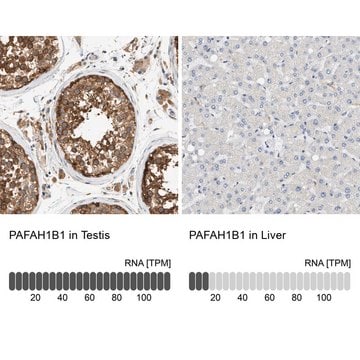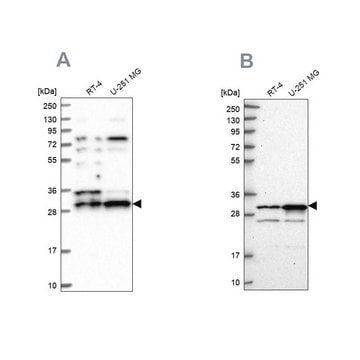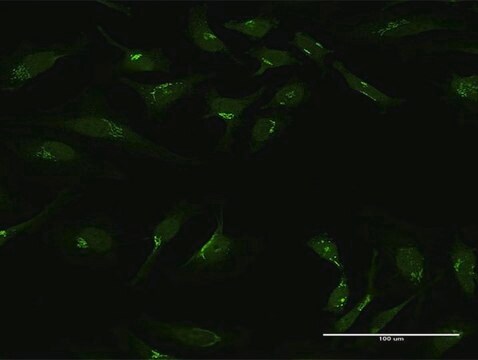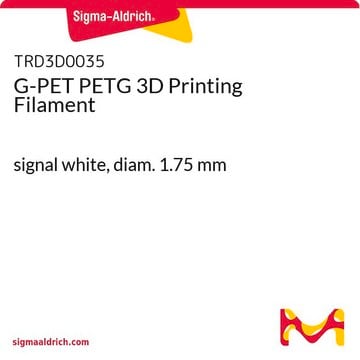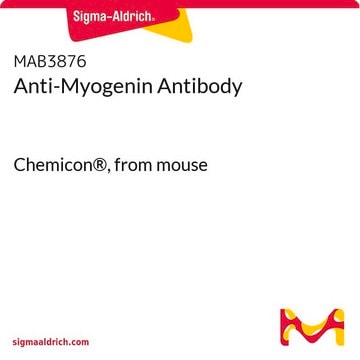ABN1720
Anti-Ninein
serum, from rabbit
Sinônimo(s):
Ninein, Glycogen synthase kinase 3 beta-interacting protein, GSK3B-interacting protein
About This Item
Produtos recomendados
fonte biológica
rabbit
Nível de qualidade
forma do anticorpo
serum
tipo de produto de anticorpo
primary antibodies
clone
polyclonal
reatividade de espécies
rat, human, mouse
técnica(s)
immunocytochemistry: suitable
immunofluorescence: suitable
immunohistochemistry: suitable
western blot: suitable
nº de adesão NCBI
nº de adesão UniProt
Condições de expedição
ambient
modificação pós-traducional do alvo
unmodified
Informações sobre genes
mouse ... Nin(18080)
Descrição geral
Especificidade
Imunogênio
Aplicação
Immunocytochemistry Analysis: A 1:500 dilution from a representative lot detected cytoplasmic and centrosome ninein immunoreactivity in 0.1 Triton X-100 extracted and 4% paraformaldehyde-fixed HEK293T cells (Courtesy of Professor Kensuke Hayashi, Sophia Univesity, Japan).
Immunofluorescence Analysis: A representative lot detected ninein immunoreactivity in the centrosome of proliferative apical progenitor cells (APs) by fluorescent immunohistochemisty staining of 4% paraformaldehyde-fixed cerebral cortex cryosections from E17.5 rat embryos. Ninein immunoreactivity was found downregulated in embryo sections from small eye rats with homozygous rSey2/rSey2 Pax6 mutation (Shinohara, H., et al. (2013). Biol Open. 2(7):739-749).
Immunofluorescence Analysis: A representative lot detected intense ninein immunoreactivity at the ventricular surface by fluorescent immunohistochemisty staining of 4% paraformaldehyde-fixed cerebral cortex cryosections from E13 and E18 mouse embryos. Lower immunoreactivity was also observed in the E18 cortical plate (CP), but was of much weaker intensity in the E13 cortex (Ohama, Y., and Hayashi, K. (2009). Histochem. Cell Biol. 132(5):515-524).
Immunocytochemistry Analysis: A representative lot detected granular ninein immunoreactivity in somatodendritic compartment, but not in the axon by fluorescent immunocytochemistry staining of 4% paraformaldehyde-fixed cultured cortical neurons from E18 mouse embryos. About 60% of ninein granules are associated with microtubules and showed resistance to 0.5% Triton X-100 (Ohama, Y., and Hayashi, K. (2009). Histochem. Cell Biol. 132(5):515-524).
Immunohistochemistry Analysis: A representative lot detected ninein immunoreactivity in the cortical plate (CP), white matter (WM), and the ventricular zone (VZ) of paraffin-embedded embryonic E16.5 mouse brain sections. Ninein immunoreactivity was found downregulated in the CP and WM, but not VZ, of Sip1fl/flNexCre embryos with hippocampal granule cell-targeted Sip1 knockout (Srivatsa, S., et al. (2015). Neuron 85(5):998-1012).
Western Blotting Analysis: A representative lot detected ninein in cortical lysate from postnatal P0, P3, P4 and P7 mouse brain tissue homogenates (Srivatsa, S., et al. (2015). Neuron 85(5):998-1012).
Note: Extracting soluble ninein under microtubule-stabilizing conditions with 0.5% Triton X-100 in the presence of 10 M paclitaxel (Cat. Nos. 580555 & 580556) prior to fixation can be employed to better visualize microtubule- and centrosome-associated ninein immunoreactivity (Ohama, Y., and Hayashi, K. (2009). Histochem. Cell Biol. 132(5):515-524).
Qualidade
Immunocytochemistry Analysis (ICC): A 1:500 dilution of this antiserum detected ninein in NIH/3T3 cells..
Descrição-alvo
Outras notas
Not finding the right product?
Try our Ferramenta de seleção de produtos.
Código de classe de armazenamento
12 - Non Combustible Liquids
Classe de risco de água (WGK)
WGK 1
Ponto de fulgor (°F)
Not applicable
Ponto de fulgor (°C)
Not applicable
Certificados de análise (COA)
Busque Certificados de análise (COA) digitando o Número do Lote do produto. Os números de lote e remessa podem ser encontrados no rótulo de um produto após a palavra “Lot” ou “Batch”.
Já possui este produto?
Encontre a documentação dos produtos que você adquiriu recentemente na biblioteca de documentos.
Nossa equipe de cientistas tem experiência em todas as áreas de pesquisa, incluindo Life Sciences, ciência de materiais, síntese química, cromatografia, química analítica e muitas outras.
Entre em contato com a assistência técnica